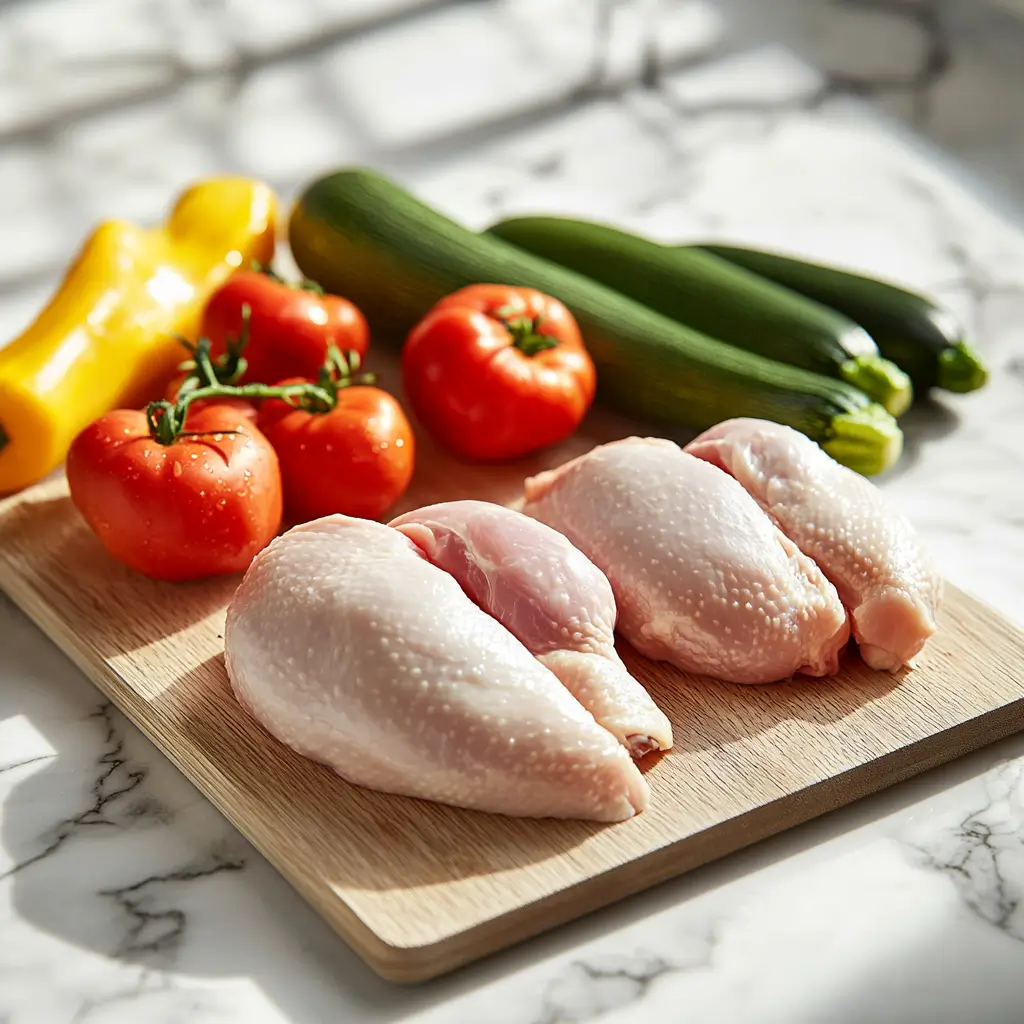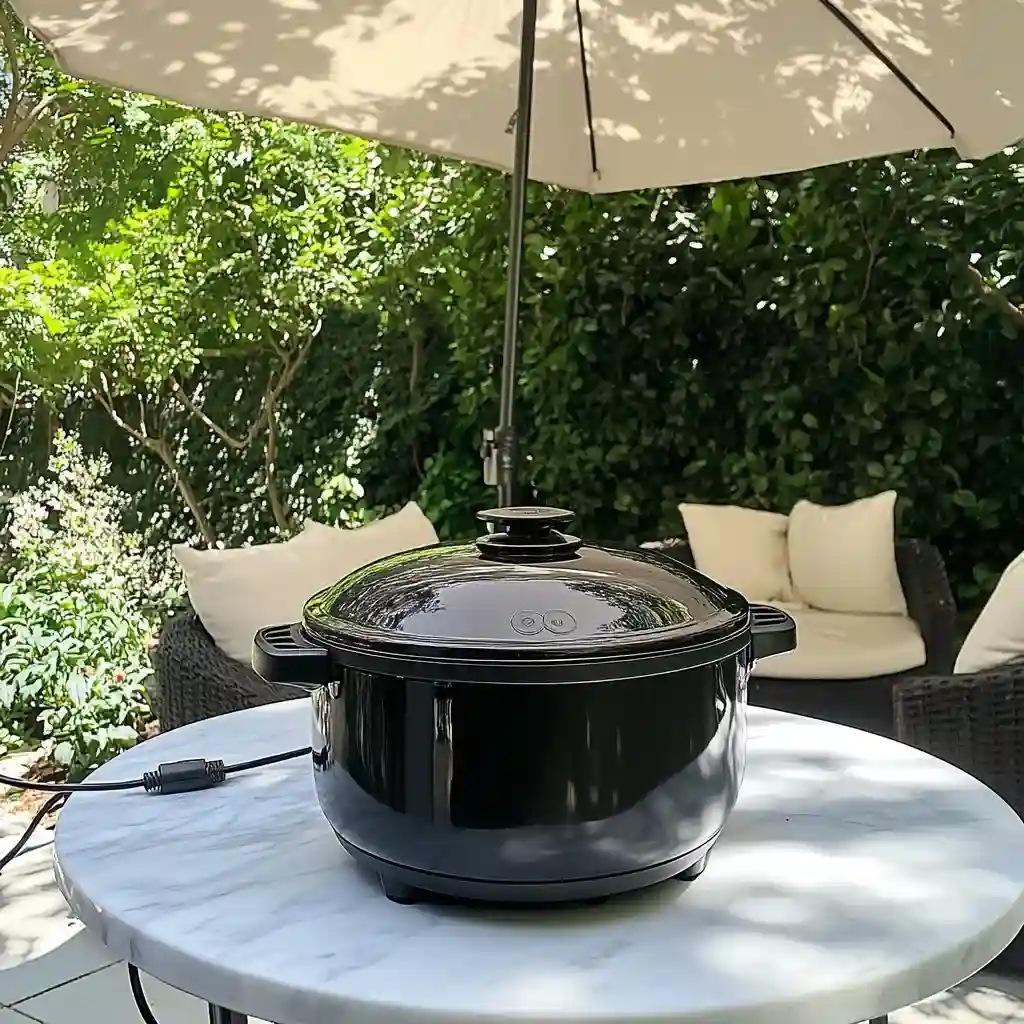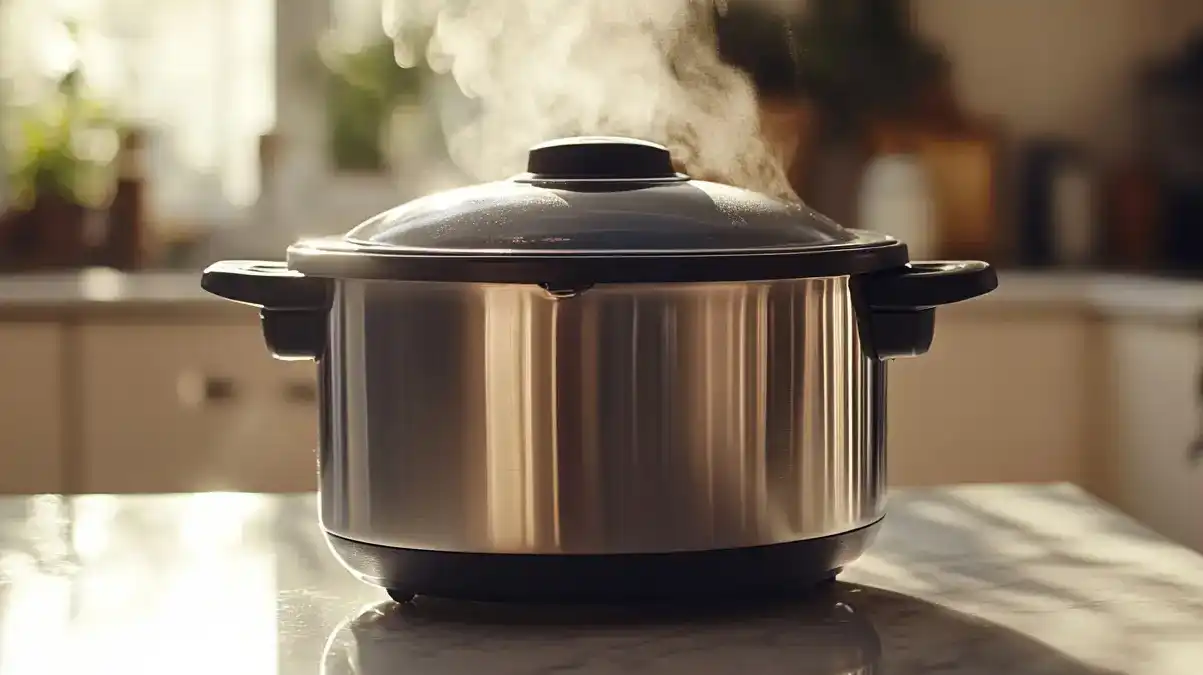Table of Contents
As the temperatures rise, so does the risk of foodborne illnesses—especially when using a slow cooker. Slow cooker safety in summer is more than just a precaution—it’s essential. While slow cooking remains one of the most convenient and energy-saving methods for summer meals, hot weather introduces additional risks you can’t afford to ignore.
This article provides practical, science-backed slow cooker safety in summer tips to help you cook confidently and avoid common hazards. From selecting the right ingredients and thawing meat properly to ensuring safe temperatures, ventilation, and leftovers handling, we’ve got every angle covered. You’ll also find answers to the most frequently asked questions about using your slow cooker during the summer season.
Don’t miss our slow-cooker summer tips for even more seasonal insights on maintaining quality and flavor.
Let’s dive in and help you stay safe while enjoying delicious, slow-cooked meals this summer.
Why Summer Demands Extra Food Safety Care
Bacterial risks increase with ambient heat
Summer heat accelerates bacterial growth. Foods left in the “danger zone” between 40°F and 140°F for too long can develop harmful pathogens like Salmonella or Listeria. This is especially true for dishes in a slow cooker that don’t reach their safe internal temperature quickly.
According to USDA guidelines, perishable foods should not sit at room temperature longer than two hours—and in temperatures above 90°F, that window drops to one hour. If your slow cooker isn’t heating fast enough, it might put your food in jeopardy.
Common summer mistakes with slow cooking
A few seemingly harmless habits can put your food safety at risk:
- Prepping ingredients too early and letting them sit on the counter.
- Overloading the slow cooker, which can lead to uneven heating.
- Using cold ingredients, especially frozen meats, which delay heating.
Discover great ideas like must-have tools for summer slow cooking that can help you avoid these mistakes.
Safe handling starts before the slow cooker
Food safety begins at the prep stage. Always:
- Wash your hands before and after handling raw ingredients.
- Sanitize surfaces where food is prepped.
- Use separate cutting boards for meat and produce.
Slow cookers are forgiving, but poor preparation habits can still lead to dangerous results.
Looking for inspiration? Try batch cooking freezer-friendly summer recipes that are both safe and time-saving.
Choosing and Preparing Ingredients Safely
Thawing meat properly before cooking
Slow cookers don’t heat frozen food quickly enough to keep it out of the bacteria-prone danger zone. That’s why it’s critical to thaw all meats fully in the refrigerator before adding them to your cooker.
Avoid using a microwave for thawing, as it can result in uneven defrosting. Never thaw on the counter—it exposes the outer layers to unsafe temperatures while the inside remains frozen.

For faster, safe thawing:
| Method | Time Estimate | Safety Level |
|---|---|---|
| Refrigerator | 12-24 hours (best) | Very Safe |
| Cold Water Soak | 1-3 hours (sealed bag) | Moderately Safe (if monitored) |
| Microwave (partial) | 10-15 minutes | Least Safe (cook immediately) |
Washing and storing summer produce
Summer fruits and vegetables may carry dirt, pesticides, or bacteria. Rinse thoroughly under cool water and pat dry before use. Even if you’re peeling them, wash first to avoid transferring contaminants with a knife.
Storage tips:
- Keep cut produce refrigerated.
- Store items like leafy greens in airtight containers.
- Avoid moisture buildup in your fridge that can encourage mold growth.
Don’t miss our low-FODMAP slow cooker beef and potato stew for a balanced meal using summer vegetables safely.
Avoiding cross-contamination during prep
Cross-contamination is one of the biggest risks in summer slow cooking. Warm weather accelerates bacteria transfer between surfaces.
Follow these best practices:
- Use separate utensils and boards for raw and cooked foods.
- Sanitize knives immediately after cutting raw meat.
- Keep marinades used on raw foods away from cooked dishes unless boiled.
Check out no-bean chili slow cooker recipe to practice safe meat-handling techniques in spicy dishes.
Cooking Safely with Your Slow Cooker
Using the right temperature settings
Not all slow cookers heat the same way, especially in warm weather. It’s essential to understand your appliance and use the right setting to kill harmful bacteria. According to the USDA, food must reach an internal temperature of at least 165°F to be safe.

General rule of thumb:
- Use the low setting for long, unattended cooks (8–10 hours).
- Use the high setting when cooking meats that require reaching a safe internal temp quickly (4–6 hours).
- Always preheat your slow cooker before adding ingredients if your model allows it.
Pro tip: Avoid the “Keep Warm” setting for actual cooking—it’s designed only to maintain temperature, not cook food thoroughly.
Avoiding underfilled or overfilled pots
Incorrect volume in your slow cooker can lead to uneven cooking and food safety issues.
- Underfilling (less than half full) may lead to food cooking too quickly, drying out, and not maintaining safe temperatures over time.
- Overfilling (more than 3/4 full) can trap steam, lower the internal temp, and risk bacteria survival.
For safe cooking:
| Pot Fill Level | Outcome |
|---|---|
| Less than 50% full | Food may dry or cook too fast |
| Ideal: 50%-75% full | Even, safe cooking range |
| More than 75% full | Risk of overflow or undercooking |
Timing meals correctly in warm weather
Long cook times during summer can backfire if you’re not careful. Avoid leaving the cooker unattended in hot outdoor spaces, as heat buildup can interfere with your device’s temperature regulation.
Here are some timing tips:
- Start meals in the morning to avoid peak heat hours.
- If planning to leave the house, use a programmable slow cooker that switches to “Keep Warm” after cooking.
- For outdoor cooking, use a meat thermometer to verify temps throughout.
Learn more about slow-cooker summer tips to balance timing and temperature for safety.
Proper Storage and Leftovers Handling
Cooling food before refrigerating or freezing
After a meal, many people make the mistake of placing hot food directly in the fridge. This not only raises the refrigerator’s internal temperature but can also keep your food in the danger zone (40°F–140°F) too long, allowing bacteria to grow.
Follow these food-cooling safety steps:
- Let food cool slightly at room temperature for no more than 1 hour (or 30 minutes on hot days).
- Transfer into shallow containers (no deeper than 2 inches) to help it cool faster.
- Use ice packs or a cold water bath to speed up cooling before refrigeration.
How long leftovers stay safe in summer
Heat and humidity can shorten the safe shelf life of leftovers. Use this guide to stay on top of safety:
| Food Type | Safe in Fridge | Safe in Freezer |
|---|---|---|
| Cooked meats and stews | 3–4 days | Up to 2–3 months |
| Cooked veggies and soups | 3–4 days | Up to 2–3 months |
| Dairy-based slow cooker meals | 1–2 days | Not recommended |
Label all stored items with dates to avoid guesswork. And always smell and inspect leftovers before reheating.
Reheating recommendations for food safety
When it comes to reheating slow-cooked meals, safety is non-negotiable. Never reheat in the slow cooker—it doesn’t get hot fast enough to kill bacteria.
Instead:
- Use a stovetop or microwave to bring food to at least 165°F.
- Stir during microwaving to eliminate cold spots.
- If reheating a frozen meal, thaw in the refrigerator overnight before heating.
Slow Cooker Placement and Ventilation
Avoiding direct sun or heat sources
Where you place your slow cooker can significantly impact food safety—especially in summer. Direct sunlight or proximity to hot appliances like ovens can alter how your cooker performs, potentially keeping food at unsafe temperatures for too long.

Key placement tips:
- Set your slow cooker away from windows and direct sun.
- Keep it off warm surfaces (like stove tops or metal counters).
- If cooking outside, use a shaded area or a thermal-insulated base.
Sun exposure can also degrade the plastic components of your cooker over time, which could lead to uneven heating or failure.
Ensuring proper airflow during long cooks
Ventilation matters. Long cooking sessions generate heat and steam, which need to dissipate safely. A poorly ventilated space can trap heat and reduce your cooker’s efficiency—especially models without cooling fans.
For better ventilation:
- Leave at least 3–4 inches of space on all sides of your slow cooker.
- Avoid placing the unit directly against walls or under cabinets.
- Never wrap the base in towels or fabric, as this can block heat escape.
Check out must-have tools for summer slow cooking for heat-safe mats, trivets, and other accessories to help optimize airflow.
Using insulated carriers for outdoor meals
If you’re taking your slow cooker on a picnic or to a summer gathering, maintaining a safe temperature during transport is critical. Food can drop below 140°F rapidly once unplugged.
Here’s how to stay safe:
- Use an insulated slow cooker carrier with thermal linings.
- Wrap the insert in towels for extra heat retention.
- Use a digital food thermometer before serving; if food dips below 140°F, reheat before eating.
For extended outdoor events, consider battery-powered food warmers or hot/cold food bags that maintain temps for several hours.
FAQs About Food Safety and Summer Slow Cooking
How long can food safely stay in the slow cooker on “warm” setting in hot weather?
Food should only stay on the “warm” setting for 2–4 hours maximum. The “warm” setting keeps food around 145°F–165°F, which may not prevent bacterial growth for extended periods, especially in hot weather. Always transfer leftovers to the refrigerator or freezer promptly to avoid foodborne illness.
What temperature should slow-cooked food reach to be safe in summer?
To be safe, slow-cooked food must reach an internal temperature of at least 165°F. For meats like poultry or ground beef, aim for 170°F or higher. Use a food-safe thermometer to confirm, especially when ambient temperatures are high and cooking times are long.
Is it safe to leave the slow cooker on all day in warm weather?
Yes—but only under proper conditions. Make sure:
The slow cooker is in a cool, ventilated place.
Ingredients are fully thawed and prepped safely.
You don’t open the lid repeatedly during cooking. Leaving it unattended outdoors or near heat sources increases risks.
How long should I let food cool before refrigerating or freezing in summer heat?
Let food cool for no more than 1 hour (or 30 minutes if it’s 90°F+ outside). Then, place in shallow containers and move to the fridge or freezer. The faster food drops below 40°F, the safer it remains.
Can I freeze cooked slow cooker meals immediately after cooking?
You can, but it’s safer to cool the food slightly first. Placing hot food directly into the freezer can cause condensation and uneven freezing. Let it stand for 30–60 minutes, transfer to freezer-safe containers, and label with the date.
How do I prevent bacterial growth during long summer cooking sessions?
1- Start with preheated cookers.
2- Use room-temperature or thawed ingredients.
3- Don’t cook in overfilled pots.
4- Place your cooker in a shaded, ventilated area.
Following these tips helps food move quickly through the danger zone and stay safe.
Should I use a different slow cooker setting in summer vs winter?
The settings remain the same, but environmental conditions affect results. In summer:
Use the high setting when possible for meats.
Avoid using the cooker during peak heat hours if placed outdoors.
Invest in programmable slow cookers that switch to warm automatically once food is done.
Conclusion – Keeping Your Slow Cooker Safe All Summer Long
Slow cooking in summer offers unmatched convenience, but it also demands extra attention to food safety. From thawing meat properly and choosing the right temperature settings to ensuring safe storage and mindful placement, every step matters when heat and humidity rise.
By applying the best practices shared in this guide, you can confidently enjoy your favorite slow-cooked meals—even during the hottest months. Whether you’re meal prepping for the week or planning an outdoor gathering, a few small adjustments go a long way in preventing foodborne illness and ensuring delicious results.
Want more ideas like this? Follow us on Facebook and Pinterest for simple, flavorful recipes!
You might also like these recipes


2 thoughts on “Food Safety Tips for Slow Cooking in Hot Weather: Avoid Summer Risks”